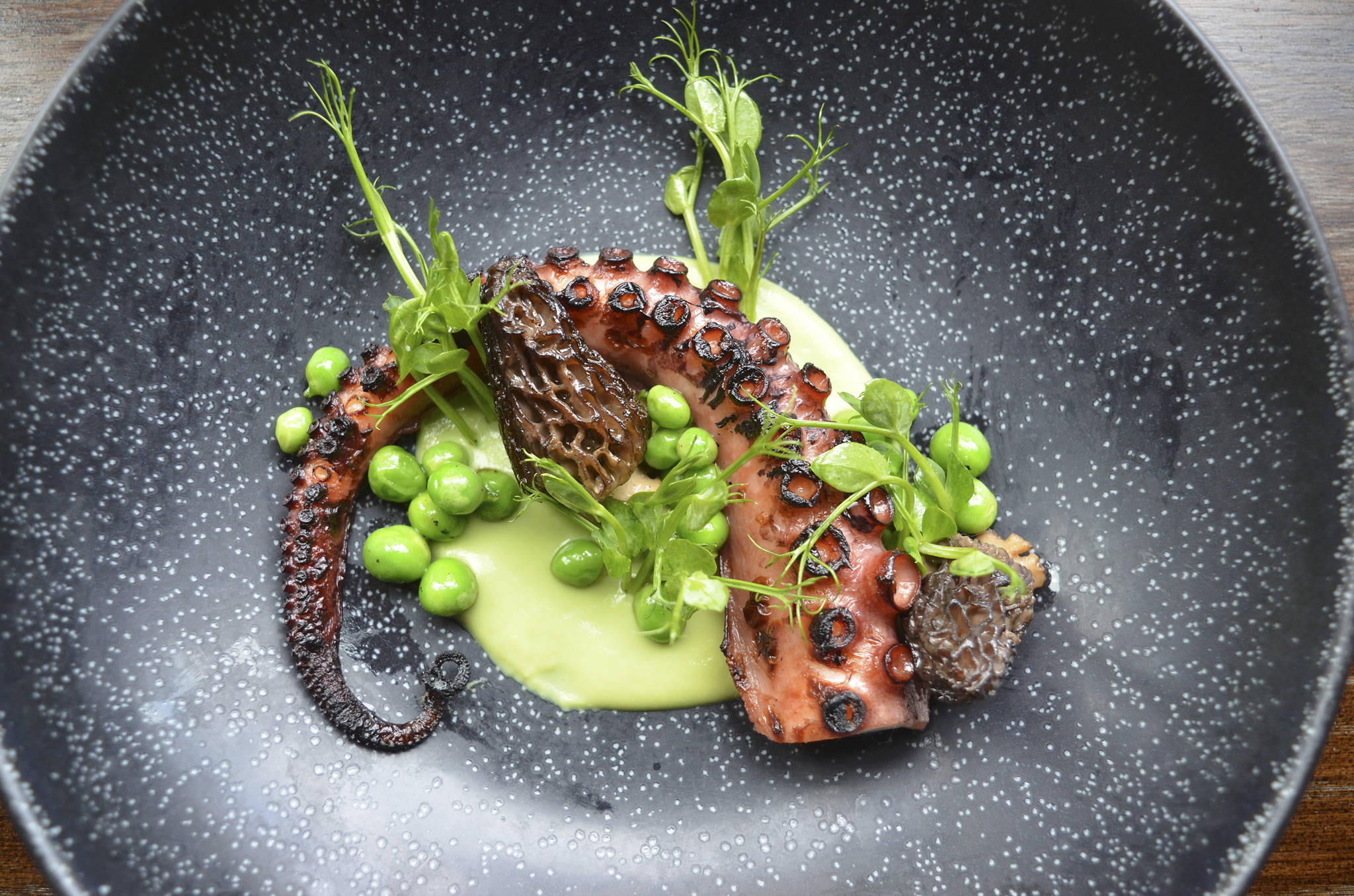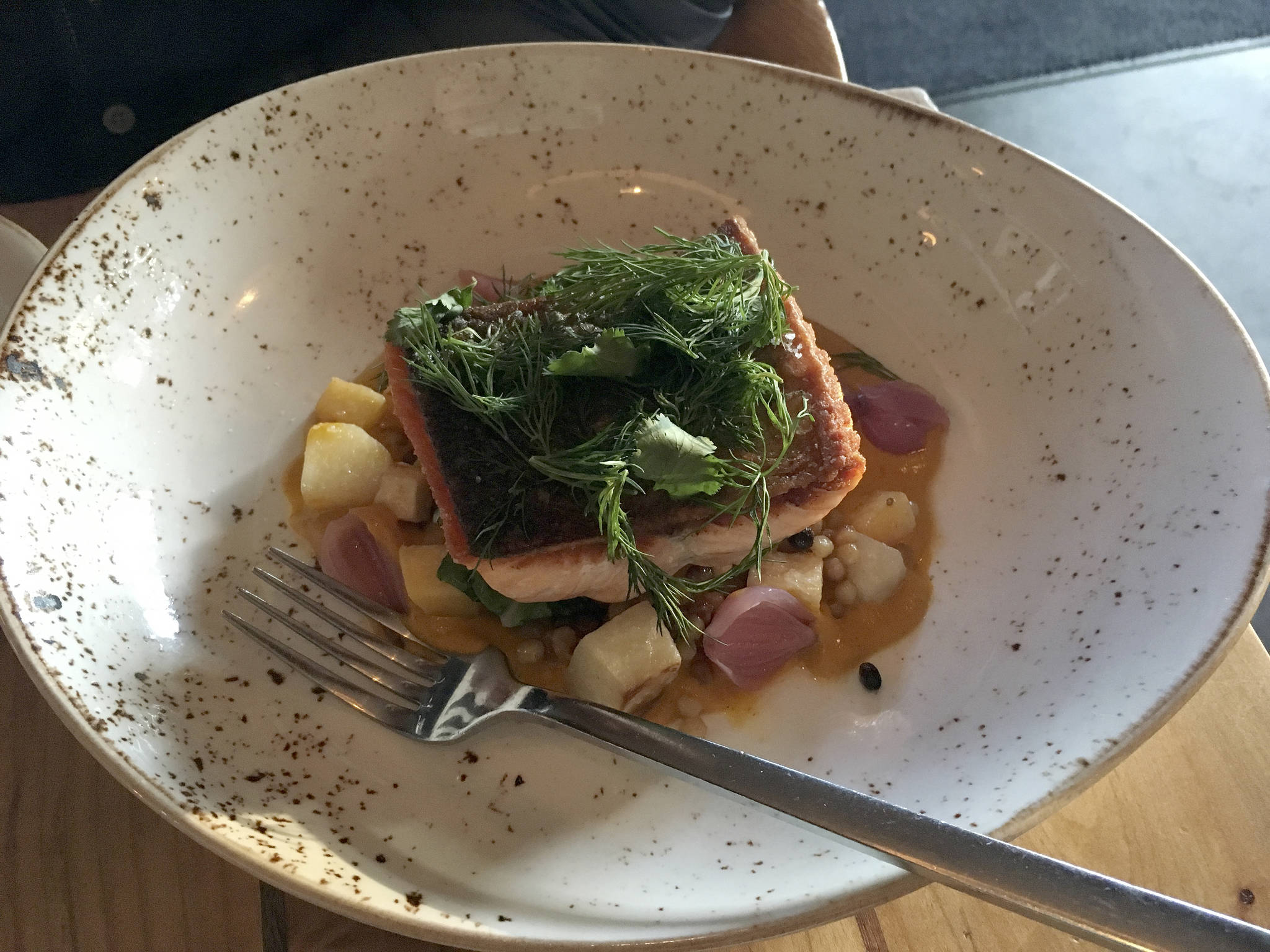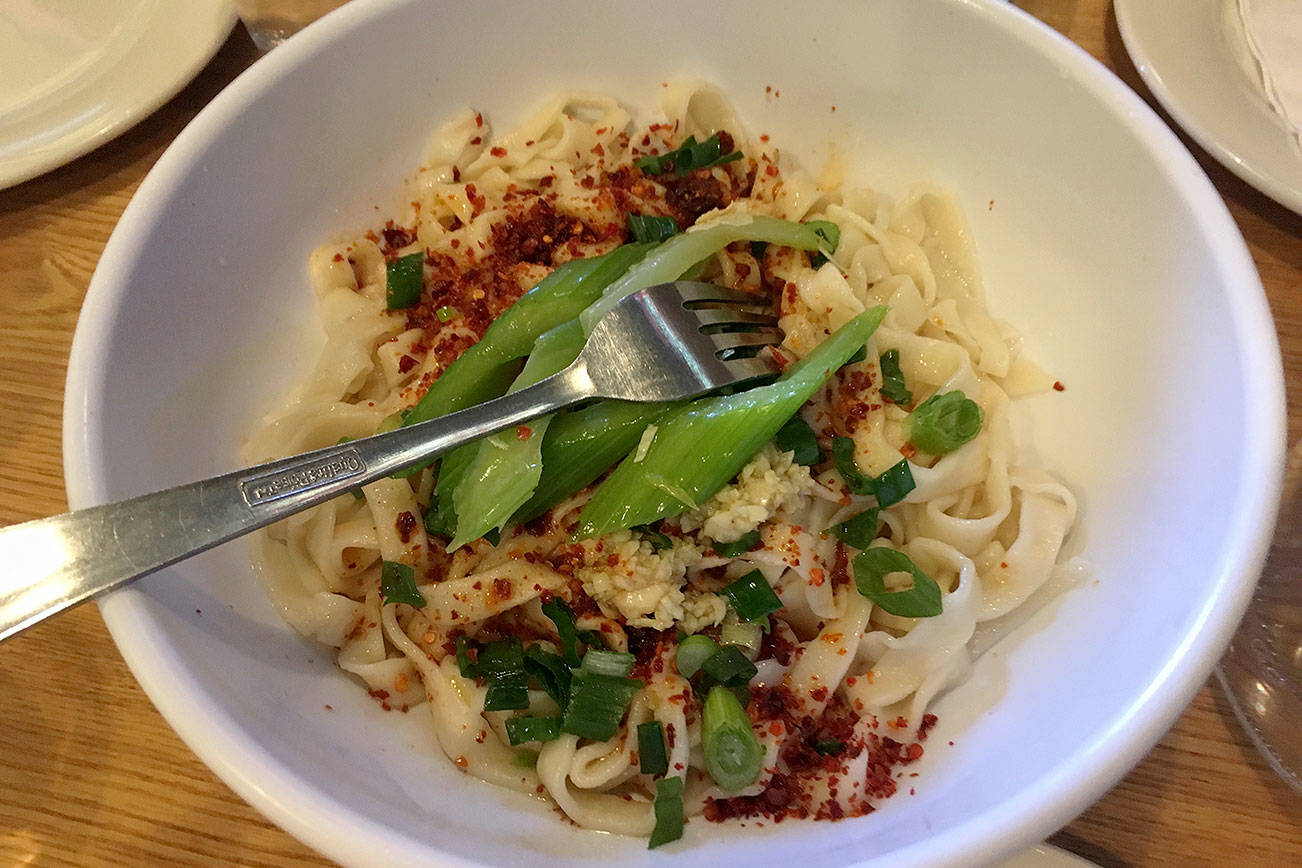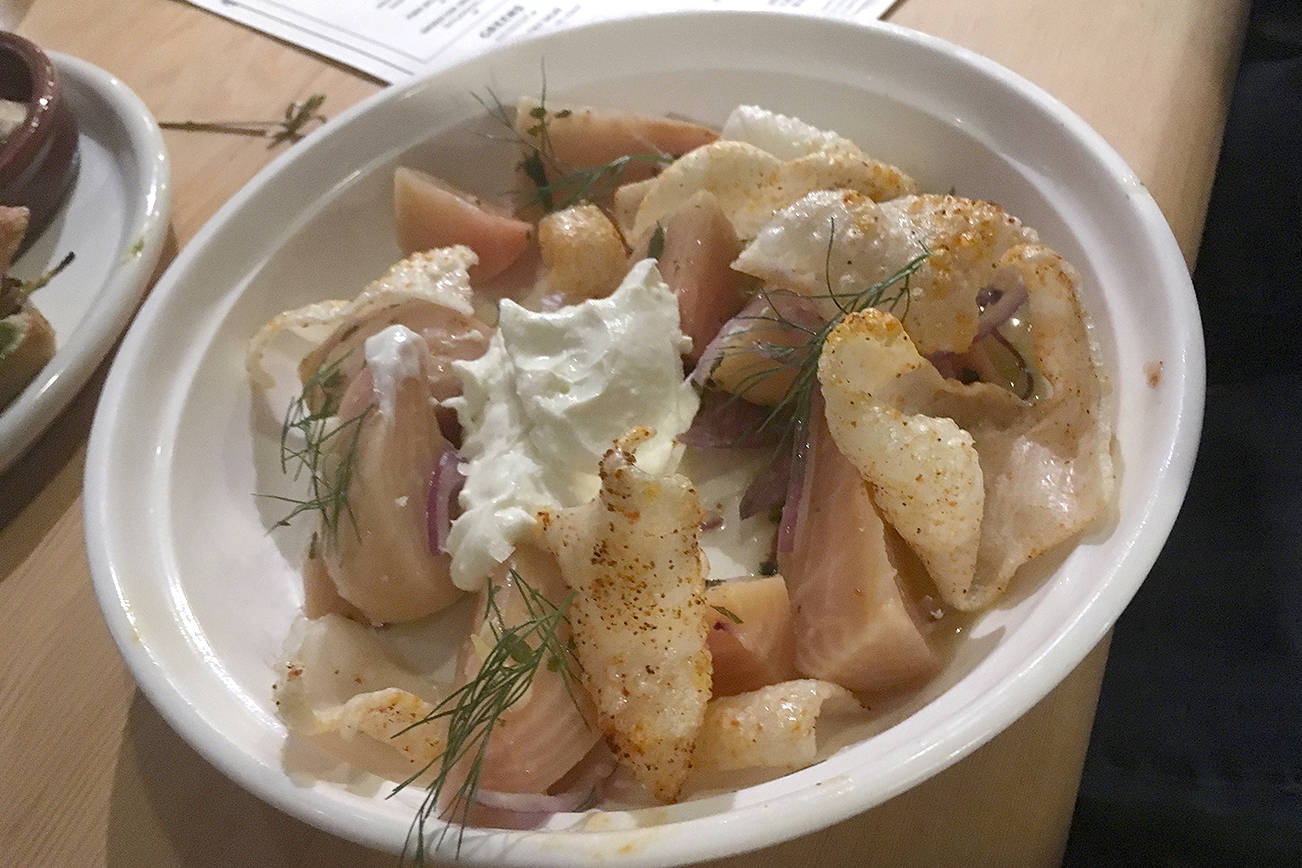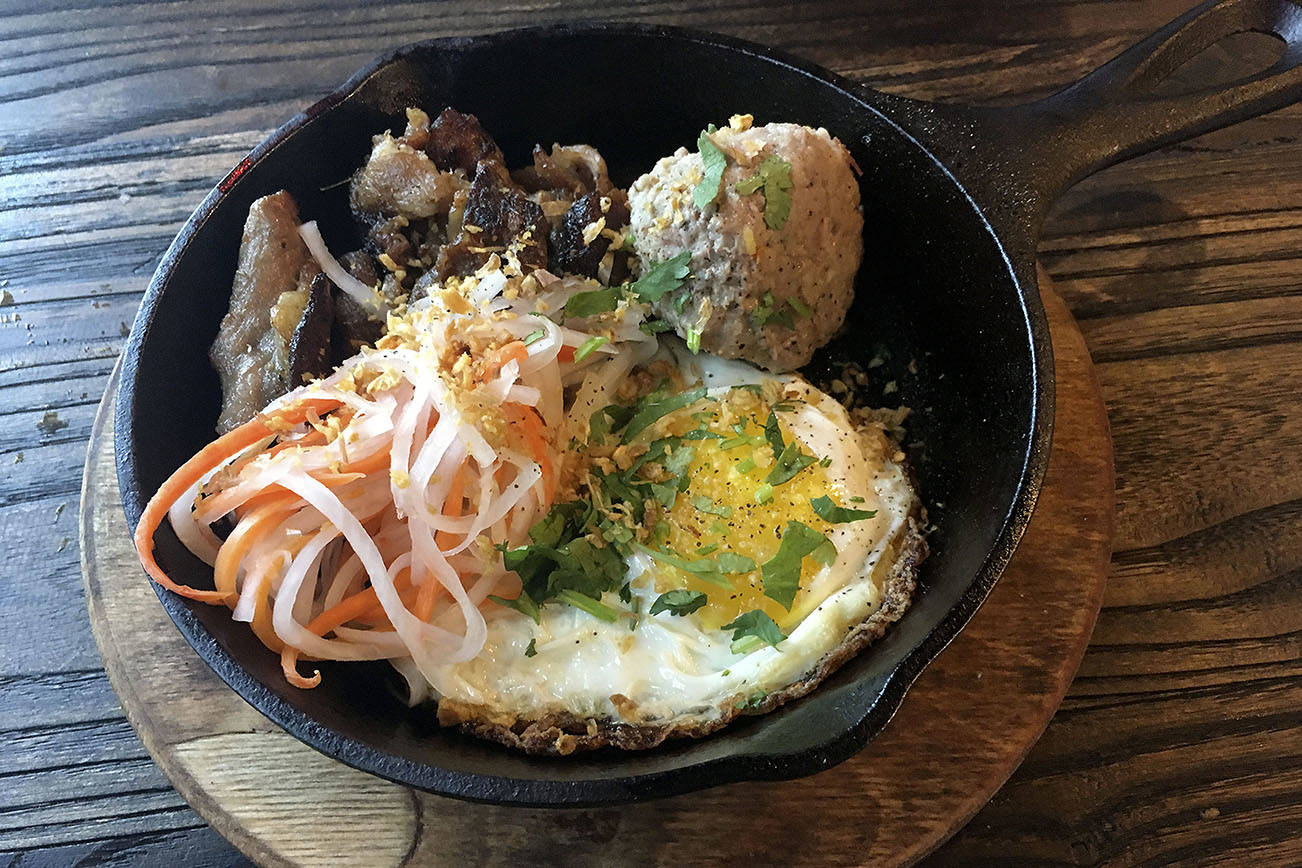When chef Shota Nakajima opened his high-end Japanese kaiseki restaurant two years ago on Capitol Hill, I was giddy with excitement. I’d once been on assignment in Japan, writing about these multicoursed, seasonally inspired, technique-driven meals, and had fallen in love with their subtle complexities and stunning presentation. However, I wondered whether locals were ready to commit to such an unfamiliar concept, one that demanded both considerable time and money. They weren’t. Naka was shuttered within a year. On the bright side, Nakajima—who recently appeared on the Food Network’s Iron Chef: Gauntlet and spent years working at a Michelin-star restaurant in Osaka—has turned his lovely, minimalist space into a more approachable Japanese restaurant, Adana (1449 East Pine St., 294-5230), where high-end Japanese whiskeys still remain, but the food is available in three-course meals or a la carte. By no means has he dumbed things down, though.
In fact, most of the plates would fit right into a typical kaiseki dinner. Those items are on a three-course menu, however, while another menu offers more bite-sized, Japanese bar food. I opted to do some mixing and matching. The three-course menu is $37 per person, but since there were two of us, I opted for the three courses, while my dining companion went a la carte ($11-$13 per dish). To that array, we added something from the bar menu, which I’ll get to.
As for the options on the three-course deal: Before you banish kale forever from your culinary psyche, try it here. Loaded with garlic and sautéed with soy, sake, and sesame oil, it’s topped with almonds and a surprising pop of freeze-dried mandarins that take it into delicious new territory. (I could eat those mandarins like candy.) In another dish, small bites of chicken are prepared in the Japanese nan ban style: lightly fried then dipped into a marinade that comprises a savory vinegar, dashi (Japanese stock), and a bit of mirin. This technique allows the flavor to more deeply penetrate the protein, and, rather than crisping the chicken, gives it a moist, tender consistency. It’s served with broccolini and ramps. Octopus, a whole tentacle cut into meaty discs, is as succulent as you’ll ever have it because—as the chef explained—they literally beat it with a bottle to tenderize it. It then spends hours in dashi until it’s ready to be warmed and served over a complimentary, spring-forward pea purée.
Ling cod is also treated with utter reverence, spending time coated in housemade kombu salt (they literally dry sheets of kombu seaweed until it breaks down into granules). The salt wrestles out the liquid of the fish, which is then cooked, skin-seared, and flavored with umami-rich furikake (a Japanese seasoning made of dried fish, sesame seed, seaweed, sugar, and salt). Poured gently over it tableside is a delicate green-tea dashi, with notes of shiso, that herbaceous, citrusy plant in the mint family that some describe as mint, others as basil, but really is a flavor all its own. (A shiso plant in the window reminded me that I might try growing my own at home.) Pork jowl, cold-smoked and made chashu style (simmered in sweet soy and mirin like that served on ramen) comes out in three pale slices, resembling raw yellowtail almost, and was a bit too rich for my palate. It was kind of like eating pure bacon fat, which may find a welcome audience with some diners.
As for that bar-menu item, it was sublime enough on its own to inspire a return visit. A seemingly basic katsu sando (pork cutlet) sandwich here becomes transcendent due to the sous-vide preparation of the pork. Cooked to perfection—in the way only sous vide can achieve—it’s then breaded and fried on the outside, heaped with a crunchy coleslaw that’s just glistened with mayonnaise, and stacked between two slices of billowy white bread. People won’t stop talking about it, I guarantee. Pair it with a whiskey-based cocktail like the Toki-Mon! (similar in style to a whiskey sour made with Suntory whiskey, lemon, ginger/clove syrup, and egg white) or take your booze straight; there are about 40 Japanese whiskeys to choose from, as well as a comprehensive sake menu.
For dessert, we skipped the green-tea brûlée and the whipped yogurt with kumquat marmalade, and tried two of their housemade gelatos: cedar-smoked and shiso-chocolate chip. The former isn’t my thing—I never enjoy the taste of pure smoke—but the latter is a fabulous twist on mint chocolate chip and yet another opportunity to indulge my love of that hard-to-classify leaf.
My only complaint—a very minor one—was that many of our questions about the food needed to be routed through the kitchen. But that’s really because we were sitting at the bar, and our “server” was technically a bartender. However, given that the chef serves one or more of your dishes, you have more than enough time to chat and learn about the extensive processes that go into making this exceptional food. Seattle diners may not have been ready for kaiseki, but Adana offers baby steps into an ancient, rich world of Japanese cookery.
nsprinkle@seattleweekly.com
